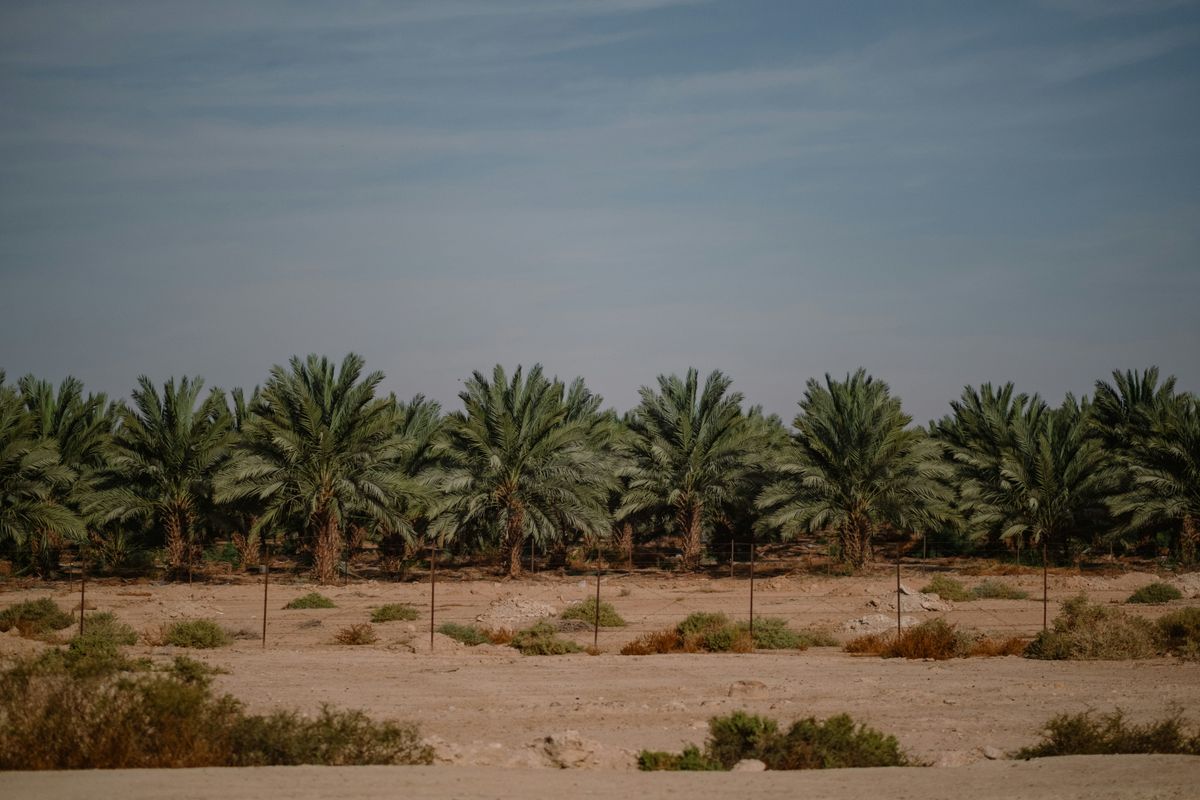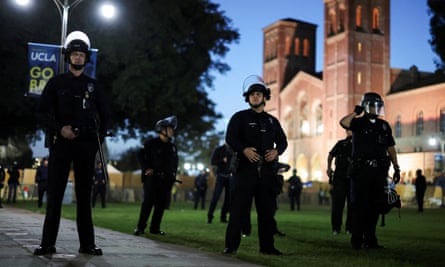Gen Z and Millennials find meetings unproductive compared to instant messaging
ByDr. Tim Sandle
DIGITAL JOURNAL
May 4, 2024

Headquartered in Ho Chi Minh City, VNG is one of Vietnam's leading game publishers and also runs a digital wallet and the country's most popular messaging platform - — © AFP Nhac NGUYEN
The world of work continues to evolve and the younger generation are less keen to sit in meetings compared with communicating using instant messaging or email. A survey reveals that 59 percent more Gen Z and Millennial workers believe that instant messaging or email instead of calls or meetings is the best way to “get things done.”
The research comes from a study undertaken by global recruitment agency Robert Walters. This suggests modern technology methods have enabled younger professionals to achieve more efficient outcomes. As a consequence, just 11 percent of this cohort believe that calls and meetings are worthwhile.
In contrast, the survey finds that 49 percent of Gen X and Baby Boomers (aged 44-78) believe that less calls and meetings will have a negative impact on business relationships. Such findings exemplify the challenges of a multigenerational workforce.
This is in the context of the different generations, as commonly categorised by marketers:
Commenting on these findings, Martin Fox, Managing Director of Robert Walters Canada, says: “Younger professionals are embracing the digital age and the positive impact it can have on productivity and time management.”
Fox continues: “While the efficiency and convenience of digital communication cannot be denied, we must recognize the downsides. Face-to-face interactions allow for meaningful connections and provide an opportunity for non-verbal communication cues, building trust and rapport with clients and colleagues.”
Citing an example, Fox raises: “The subtleties of body language, facial expressions, and tone of voice contribute to a deeper understanding and connection that often cannot be fully conveyed through text or even video chats.”
Online gaming abuse: Why the majority of gamers sufferByDr. Tim Sandle
DIGITAL JOURNAL
May 4, 2024

Headquartered in Ho Chi Minh City, VNG is one of Vietnam's leading game publishers and also runs a digital wallet and the country's most popular messaging platform - — © AFP Nhac NGUYEN
The world of work continues to evolve and the younger generation are less keen to sit in meetings compared with communicating using instant messaging or email. A survey reveals that 59 percent more Gen Z and Millennial workers believe that instant messaging or email instead of calls or meetings is the best way to “get things done.”
The research comes from a study undertaken by global recruitment agency Robert Walters. This suggests modern technology methods have enabled younger professionals to achieve more efficient outcomes. As a consequence, just 11 percent of this cohort believe that calls and meetings are worthwhile.
In contrast, the survey finds that 49 percent of Gen X and Baby Boomers (aged 44-78) believe that less calls and meetings will have a negative impact on business relationships. Such findings exemplify the challenges of a multigenerational workforce.
This is in the context of the different generations, as commonly categorised by marketers:
Generations Born Current AgesGen Z 1997 – 2012 12 – 27Millennials 1981 – 1996 28 – 43Gen X 1965 – 1980 44 – 59Boomers II (a/k/a Generation Jones)1955 – 1964 60 – 69Boomers I 1946 – 1954 70 – 78
Commenting on these findings, Martin Fox, Managing Director of Robert Walters Canada, says: “Younger professionals are embracing the digital age and the positive impact it can have on productivity and time management.”
Fox continues: “While the efficiency and convenience of digital communication cannot be denied, we must recognize the downsides. Face-to-face interactions allow for meaningful connections and provide an opportunity for non-verbal communication cues, building trust and rapport with clients and colleagues.”
Citing an example, Fox raises: “The subtleties of body language, facial expressions, and tone of voice contribute to a deeper understanding and connection that often cannot be fully conveyed through text or even video chats.”

Workers in a business hub. Image by © Tim Sandle.
The study also highlights the shift in attitudes towards traditional business practices. The old-school concept of a “long lunch” with a prospective client is perceived as outdated by some younger professionals, with almost half (46 percent) saying that they are “hit and miss”.
Here Fox observes: “Younger generations are less inclined to spend hours in a restaurant or cafe when they can have a quick discussion online. This change has the potential to reshape business models, as companies need to adapt to meet the needs and preferences of this tech-savvy demographic. Nevertheless, it’s crucial for employees to recognize the great value in in-person face time; it remains a crucial aspect of professional relationship-building.”
Such findings indicates that organizations should implement various communication methods to accommodate different preferences.
The study also highlights the shift in attitudes towards traditional business practices. The old-school concept of a “long lunch” with a prospective client is perceived as outdated by some younger professionals, with almost half (46 percent) saying that they are “hit and miss”.
Here Fox observes: “Younger generations are less inclined to spend hours in a restaurant or cafe when they can have a quick discussion online. This change has the potential to reshape business models, as companies need to adapt to meet the needs and preferences of this tech-savvy demographic. Nevertheless, it’s crucial for employees to recognize the great value in in-person face time; it remains a crucial aspect of professional relationship-building.”
Such findings indicates that organizations should implement various communication methods to accommodate different preferences.
By Dr. Tim Sandle
DIGITAL JOURNAL
May 4, 2024

Gamers in China are required to use their ID cards to register to play games online.
It has been estimated that 90 percent of children over the age of two, in high income countries like the U.S., play some form of video game. Hence, it has become more important than ever to protect a child while they play games online.
Safety advice for online activities like playing video games includes keeping personal information a secret and never sharing personal information with other players (such as real name, home address, age, gender, or pictures).
Marin Cristian-Ovidiu, the CEO of the Internet-based game offering platform OnlineGames.io has discussed with Digital Journal how to keep a child safe from online bullies.
Hide Your Child’s Personal Details
Cristian-Ovidiu recommends that a child should create a nickname and use an avatar that has no connection to them, rather than displaying their real name and photograph. They should also never have any of their basic details (date of birth, school/college name, mobile number, and address) attached to their account, and they should never discuss them online.
Show Them How To Spot Unsafe Adults
Warn your child that adults can masquerade as children, Cristian-Ovidiu warns, such as to obtain sexual pictures or arrange secret meet-ups.
Cristian-Ovidiu states: “Also warn your child about behaviours known as trolling and ‘griefing’, where people deliberately play badly or do things that make games worse for their teams. Let them know that these people are out to provoke a reaction and the best thing they can do is ignore them.”
Furthermore, he advises that cybercriminals often use in-game chats to perform their scams (e.g. offering fake loot boxes and downloads). Some try to get kids to give up their ‘skins’ (in-game cosmetic items) or in-app purchases by offering money. In some games, you can turn off the chat function to avoid these messages.
Create A Family Agreement
Discuss safety issues openly with your child and encourage them to make an agreement with you about things they will and will not do, advises Cristian-Ovidiu. This should cover points like how much screen time they’re allowed and an agreement to only play age-appropriate games. Encourage your child to tell you if there are issues but monitor their games and conversations.
Block Them From Accessing Inappropriate Content
Cristian-Ovidiu recommends: 2You can adjust each game’s privacy settings so you have more control over your child’s access. You can also update console settings to set age restrictions, manage online interactions, filter content, and control online purchases. This will prevent your child from being able to download games that feature adult content.”
Have A Gameplan For Dealing With Nasty Players
Cristian-Ovidiu also suggests explaining to a child the steps of what they should do if someone becomes abusive or behaves suspiciously.
How to spot a phishing email like a cybersecurity expert?
By Dr. Tim Sandle
DIGITAL JOURNAL
By Dr. Tim Sandle
DIGITAL JOURNAL
May 3, 2024

Computers and offices. — Image by © Tim Sandle.
Phishing is an attempt to steal personal information or break into online accounts using deceptive emails, messages, ads or sites that look similar to sites you already use. It is a growing menace and the use of email remains the most common way to seeking to defraud the unaware.
Through the day scammers are sending a constant barrage of phishing emails to try and steal your money and identity.
Oliver Page, the CEO of CyberNut, tells Digital Journal about five ways to spot phishing emails like a professional IT consultant.
Tip 1: The Language Is Urgent And Fear-Mongering
With this first area, Page picks a scenario where you could be warned something bad will happen (for example, you will be charged or lose access to an important account) or you will miss a bargain or prize if you do not respond immediately.
Page states: “By implying there’s limited time to fix an error or claim a prize, the scammers are hoping you’ll be less likely to think twice about what you’re doing.”
Tip 2: The Message Content Is Poor Or Garbled
Reputable firms would never start an email with a generic or impersonal greeting such as ‘Hi’. Similarly, instances of misspelling or bad grammar should ring alarm bells. If the email is littered with spelling and grammar mistakes, it clearly indicates the sender is not using tools such as Grammarly or Word’s spellcheck; it would be extremely unlikely for genuine companies to not proofread official emails, so repeated or obvious errors should always clue you in to the fact that something is amiss.
Tip 3: The Sender Address Or Domain Name Is Suspicious
If the message purports to come from a major organisation (such as Paypal), the email address should match the company’s name (e.g. @paypal.com). Genuine companies will never use a service like Gmail (@gmail.com) to communicate with you.
According to Page: “If the spelling of the domain name is incorrect, this should be immediately concerning. A scammer may have created a copycat address that slightly varies from the genuine company name (e.g. apple1.com) in the hope that you won’t check too closely.”
Tip 4: The Email Makes Personal Information Requests
Page warns that scammers are most often after one of the following:Your social security number
Your bank details
Your card numbers
Your contact information
This list leads Page to state: “If you’re unsure, never supply this data online. If the sender wants to send you money, be suspicious if they ask for your bank details first.”
Tip 5: The Email Contains Unknown Attachments Or Links
Page cautions not to access any attachments if they have strange file names or extensions. Clicking on ‘.zip’ means you’d unzip files onto your computer, and ‘.exe’ would run a software program on your device.
These attachments could release computer viruses or malware, while suspicious links could take you to fraudulent websites. Trustworthy companies would be more likely to use platforms such as Dropbox when supplying extra documents.
This leads Page to conclude: “You should also beware of vague and unexpected messages purporting to be from well-known companies, the authorities or the government, or your bank, as well as any email promising unbelievably good offers like free vacations or big-ticket items.”

Computers and offices. — Image by © Tim Sandle.
Phishing is an attempt to steal personal information or break into online accounts using deceptive emails, messages, ads or sites that look similar to sites you already use. It is a growing menace and the use of email remains the most common way to seeking to defraud the unaware.
Through the day scammers are sending a constant barrage of phishing emails to try and steal your money and identity.
Oliver Page, the CEO of CyberNut, tells Digital Journal about five ways to spot phishing emails like a professional IT consultant.
Tip 1: The Language Is Urgent And Fear-Mongering
With this first area, Page picks a scenario where you could be warned something bad will happen (for example, you will be charged or lose access to an important account) or you will miss a bargain or prize if you do not respond immediately.
Page states: “By implying there’s limited time to fix an error or claim a prize, the scammers are hoping you’ll be less likely to think twice about what you’re doing.”
Tip 2: The Message Content Is Poor Or Garbled
Reputable firms would never start an email with a generic or impersonal greeting such as ‘Hi’. Similarly, instances of misspelling or bad grammar should ring alarm bells. If the email is littered with spelling and grammar mistakes, it clearly indicates the sender is not using tools such as Grammarly or Word’s spellcheck; it would be extremely unlikely for genuine companies to not proofread official emails, so repeated or obvious errors should always clue you in to the fact that something is amiss.
Tip 3: The Sender Address Or Domain Name Is Suspicious
If the message purports to come from a major organisation (such as Paypal), the email address should match the company’s name (e.g. @paypal.com). Genuine companies will never use a service like Gmail (@gmail.com) to communicate with you.
According to Page: “If the spelling of the domain name is incorrect, this should be immediately concerning. A scammer may have created a copycat address that slightly varies from the genuine company name (e.g. apple1.com) in the hope that you won’t check too closely.”
Tip 4: The Email Makes Personal Information Requests
Page warns that scammers are most often after one of the following:Your social security number
Your bank details
Your card numbers
Your contact information
This list leads Page to state: “If you’re unsure, never supply this data online. If the sender wants to send you money, be suspicious if they ask for your bank details first.”
Tip 5: The Email Contains Unknown Attachments Or Links
Page cautions not to access any attachments if they have strange file names or extensions. Clicking on ‘.zip’ means you’d unzip files onto your computer, and ‘.exe’ would run a software program on your device.
These attachments could release computer viruses or malware, while suspicious links could take you to fraudulent websites. Trustworthy companies would be more likely to use platforms such as Dropbox when supplying extra documents.
This leads Page to conclude: “You should also beware of vague and unexpected messages purporting to be from well-known companies, the authorities or the government, or your bank, as well as any email promising unbelievably good offers like free vacations or big-ticket items.”








